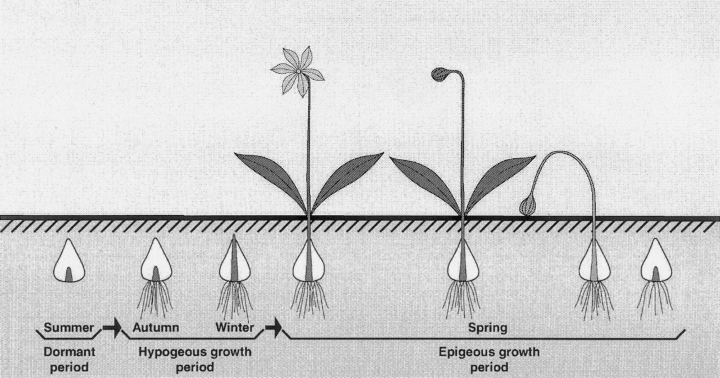The first time I encountered a white trillium (Trillium grandiflorum) with green stripes on its flowers, I thought I had found a new variant. I excitedly took a bunch of pictures and, upon returning home, shared them among friends. It didn’t take long for someone far more informed than me to point out that this was not a new variant of this beloved plant. What I had found was signs of an infection.
The green stripes on the petals are the result of a very specific bacterial infection. The bacteria responsible belongs to a group of bacterial parasites collectively referred to as phytoplasmas. Phytoplasmas are not unique to trillium. In fact, these bacteria can be found around the world and infect many different kinds of plants from coconuts to sugarcane. Indeed, most of the research on phytoplasmas is motivated by their impacts on agriculture. Despite the damage they can cause, their natural history is absolutely fascinating.
Phytoplasmas are obligate parasites. They can only live long-term inside the phloem of their preferred host plants. Once inside the plant, phytoplasmas begin tinkering with cell expression, causing an array of different symptoms that (to the best of my knowledge) depend on their botanical host. In the case of trillium, phytoplasma infection causes a change in the flower petals. By altering gene expression, petal cells becoming increasingly leaf-like, resulting in the green striping I had observed. That isn’t all the phytoplasma does either. Infections usually result in complete sterilization of the flower. I have even heard some reports that the infected plants are also weakened to the point that they eventually die.
Why the phytoplasma do this has to do with their bizarre life cycle. Now, to be fair, much of what I have been able to gather on the subject comes from research done on other plant species. Still, there are enough commonalities among phytoplasma infections that I strongly suspect they apply to the trillium system as well. Nevertheless, take what I am saying here with a grain of salt.
As mentioned, phytoplasma can only exist long-term within the phloem of their plant host. They don’t produce any sort of fruiting bodies, nor are they transferred by air or contact with tissues. This creates a bit of an issue when it comes to finding new hosts, especially if infection inevitably results in the death of the plant. This is the point in which a vector must enter the picture.
The vector in question in many cases are sap-feeding insects like leafhoppers. Leafhoppers use their needle-like proboscis to pierce the phloem and suck out sap. It’s this feed behavior that phytoplasma capitalize on to complete their lifecycle. Moreover, the phytoplasma don’t do so passively. Just as the phytoplasma alter the gene expression in the petal cells, they can also alter the expression of genes involved in plant defenses.
Research on infected Arabidopsis plants has shown that phytoplasma cause the plant to decrease production of a hormone called jasmonate. This is fascinating because jasmonate is involved in defending plants against herbivory. It was found that when plants produced less jesmonate, leafhoppers were 30%-60% more likely to lay eggs on those plants. Essentially, the phytoplasma are reducing the plants’ defenses in such a way that there is a greater chance that they will be fed on by a greater number of sap-suckers.
As leafhoppers feed on the sap of infected plants, they inevitably suck up plenty of phytoplasma in the process. Through a complex series of events, the ingested phytoplasma eventually make their way into the salivary glands of the leafhopper. Then, as the leafhopper moves from plant to plant, piercing the phloem to feed, it inevitably transfers some of the phytoplasma in its saliva into a new host, thus completing the lifecycle of these plant parasites.
To bring it back to those green stripes on the trillium flowers, I suspect that by altering the petal cells to look more like leaves, the phytoplasma may be “encouraging” leafhoppers to concentrate their feeding on infected tissues. However, this is purely speculation on my part. The lack of data outside the agricultural realm represents an important scientific void that needs filling.










